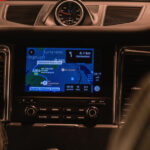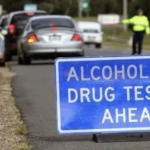What is the Definition of ‘Driving’ Under New South Wales Traffic Law?

The bulk of traffic offences in New South Wales use or infer the term ‘driving’, ‘drive’ or ‘drives’ into conduct regulated under traffic legislation, such as the Road Transport Act 2013 (NSW) (‘the Act’).
But while the meaning of these words may seem obvious, like many areas of the law they are not so straightforward and, coupled with other terms contained within offence provisions, can be subject to interpretation.
Examples under the Road Transport Act
For instance, in Chapter 5, Part 5.1, the charges involving having alcohol and other drugs in the system whilst driving, provides that:
- A person must not…
- drive a vehicle, or
- occupy the driving seat of a vehicle and attempt to put the vehicle in motion, or
- if the person is the holder of an applicable driver licence (other than an applicable provisional licence or applicable learner licence)—occupy the seat in or on a motor vehicle next to a learner driver who is driving the vehicle.
Schedule 3 Division 2 of the Act deals with the power to conduct random breath tests, and similarly state:
- A police officer may require a person to submit to a breath test in accordance with the officer’s directions if the officer has reasonable cause to believe that–
- the person is or was driving a motor vehicle on a road, or
- the person is or was occupying the driving seat of a motor vehicle on a road and attempting to put the motor vehicle in motion, or
- the person (being the holder of an applicable driver licence) is or was occupying the seat in a motor vehicle next to a learner driver while the driver is or was driving the vehicle on a road.
Definition of ‘drive’ in the Road Transport Act
Section 4 of the Act somewhat frustrating provides the non-exhaustive definition that to ‘drive includes’ [emphasis added]:
- be in control of the steering, movement or propulsion of a vehicle, and
- in relation to a trailer, draw or tow the trailer, and
- ride a vehicle.
Case law on the words ‘driving’ and ‘drive’
Lord Widgery explains “driving” (and defines the term for NSW and many other common law nations) in the English case of R v McDonagh [1974] QB 448; [1974] 2 AllER 257 (1974) 59 CrAppR 55; [1974] 2 WLR 529; [1974] RTR 372; [1974] CrimLR 317]:
‘[To “drive”] refers to a person using the driver’s controls for the purpose of directing the movement of the vehicle. It matters not that the vehicle is not moving under its own power, or is being driven by the force of gravity, or even that it is being pushed by other well – wishers. The essence of driving is the use of the driver’s controls in order to direct the movement, however movement is produced.’
Australian common law builds on this foundation, clarifying the act of driving must be “conscious and voluntary”, with the majority judgment of Mason C.J., Brennan, Deane, Dawson, Toohey and Gaudron JJ in Jiminez v The Queen (1992) 173 CLR 572, confirms the principle that a person cannot be driving a car if they are asleep:
‘If the applicant did fall asleep, even momentarily, it is clear that while he was asleep his actions were not conscious or voluntary (an act committed while unconscious is necessarily involuntary) and he could not be criminally responsible for driving the car in a manner dangerous to the public. The offence of culpable driving is, in this respect, no different to any other offence and requires the driving, which is part of the offence, to be a conscious and voluntary act’ (1) R. v. Coventry (1938) 59 CLR 633, at p 638.
What is the meaning of ‘attempting to drive’?
The term “attempting to drive” opens a whole new can of worms.
At common law, a summary offence cannot be attempted: R v Bristol Magistrates Court [1998] 3 All ER 798; these “attempting to drive” charges in the Road Transport Act are summary offences and represent a departure from the limitations placed on attempt offences at common law in recognition of the broad reach of inchoate criminal responsibility, which should not extend to that less serious category of offences.
Preparatory acts are insufficient to prove attempt charges; the prosecution must establish beyond reasonable doubt that the accused did an act immediately connected or sufficiently proximate with the actual commission of the offence and with the intention of committing that crime: Britten v Alpogut [1987] VR 929; R v Mai (1992) 26 NSWLR 371; Onuorah v R [2009] NSWCCA 238.
In the Act, the statutory standard for the attempt is stated as being an attempt ‘to put the vehicle in motion’.
The language which has actually been employed in the text of legislation is the surest guide to legislative intention: Alcan (NT) Alumina Pty Ltd v Commissioner of Territory Revenue (2009) 239 CLR 27 at [47].
The legislation specifically requires attempt to putting the vehicle in motion as opposed to ‘driving’, which is a broader concept and is satisfied by having control of the vehicle’s functions (in line with the section 4 definition).
Putting the vehicle in gear, removing the handbrake, placing pressure on the accelerator, or turning the wheel are examples of actions that might be considered proximate to the act of putting the vehicle in motion, but it would be on a case-by-case basis.
The legislated precondition that the person first be occupying the driver’s seat, shows that this itself should not be considered attempt or indication of intention.
Merely occupying the driver’s seat and having the engine running is at best an act preparatory to the act of actually attempting to put the vehicle in motion, and would be insufficient.
Even in the absence of other evidence, there would be reasonable inferences regarding the reason that might occur other than an intention to put the vehicle in motion, especially where the seatbelt is not fastened and the car has been parked stationary for some time beforehand.
One of the most frequently cited cases in this regard is McNeall v Croker (No 2) (1939) 56 WN (NSW) 149.
The case involved a defendant who occupied the driving seat of a motor vehicle, who touched the accelerator and started the engine, whilst under the influence of alcohol.
This matter raised the question as to whether these facts could establish a prima facie case of attempting to put the vehicle in motion within the meaning of s 5(2) of the Motor Traffic Act 1909.
Key judicial findings as to a sequence of actions (as opposed, for instance, to a case where the defendant is found stationary in a parked vehicle with the engine on) and it was particularly noted that the defendant was observed to operate the accelerator.
Burchell v Goodall (1994) 20 MVR 391 is also an oft-cited authority for a broad interpretation of ‘attempt to drive’.
Before anything else, the important distinction between ‘drive’ and ‘put in motion’ must be recognised.
This case involved an appeal to the West Australian Supreme Court for a conviction of attempting to drive whilst under the influence. Mr Burchell had been found in the driving seat of a stationary car, apparently asleep, and was wearing his seatbelt.
The critical fact that was established was that the appellant admitted to police that he was possibly going to drive.
The defendant later gave evidence as to an absence of intention that was rejected; the magistrate found as a matter of fact that he had an intention to drive while performing the acts above, as was pointed out during the course of the judgment.
These cases still serve to demonstrate only that the prosecution must prove beyond a reasonable doubt that the defendant:
- Did an act or acts sufficiently proximate (not merely preparatory) to the putting of the vehicle in motion, and
- Had an intention to put the vehicle in motion when he/she did those acts.
Going to court for a traffic offence?
If you have been accused of a traffic offence, call Sydney Criminal Lawyers anytime on (02) 9261 8881 to arrange a conference with an experienced traffic defence lawyer with in-depth specialist knowledge of the laws, processes and procedures that apply, who will advise you of your options and the best way forward, and apply their knowledge to ensure you obtain the optimal outcome.






